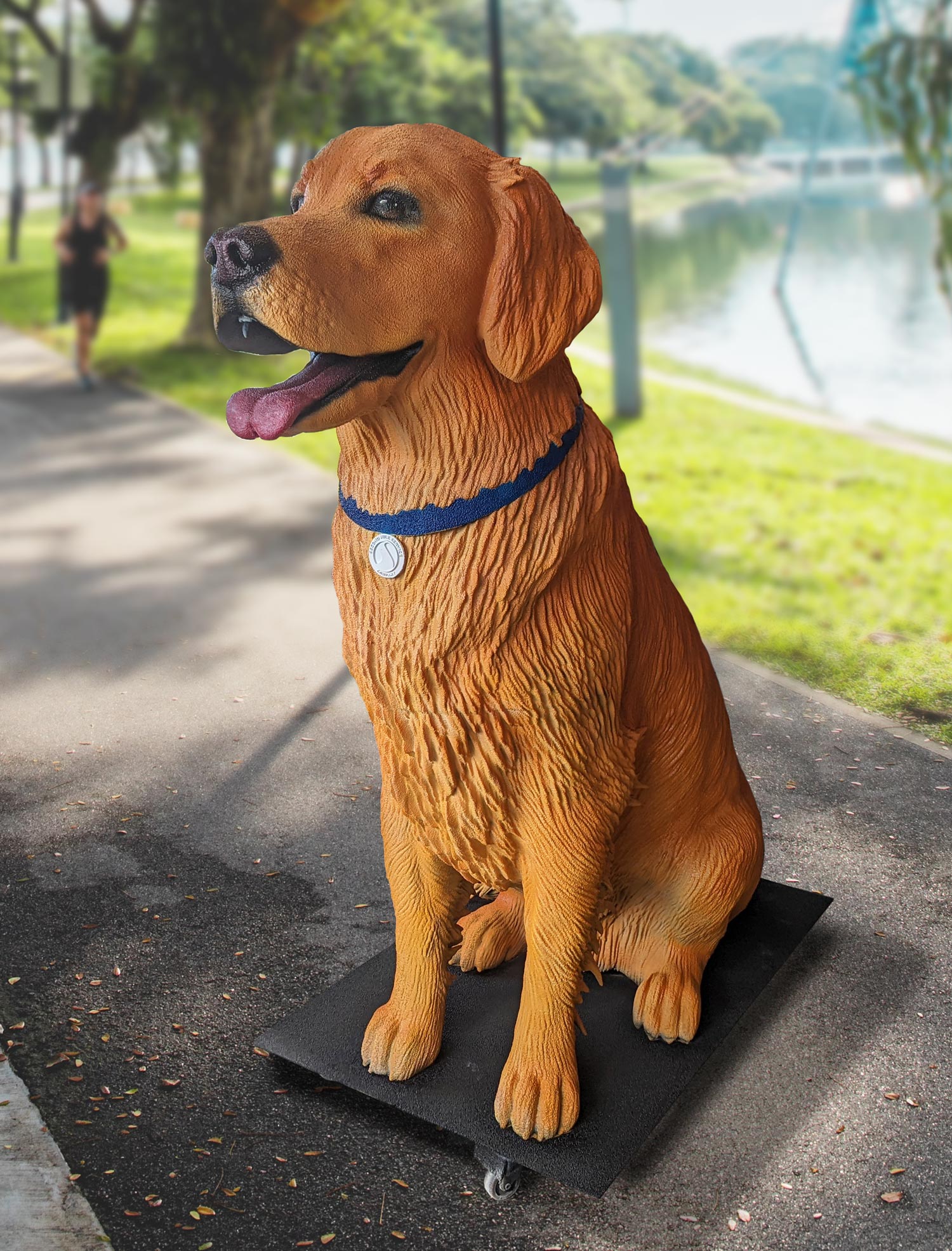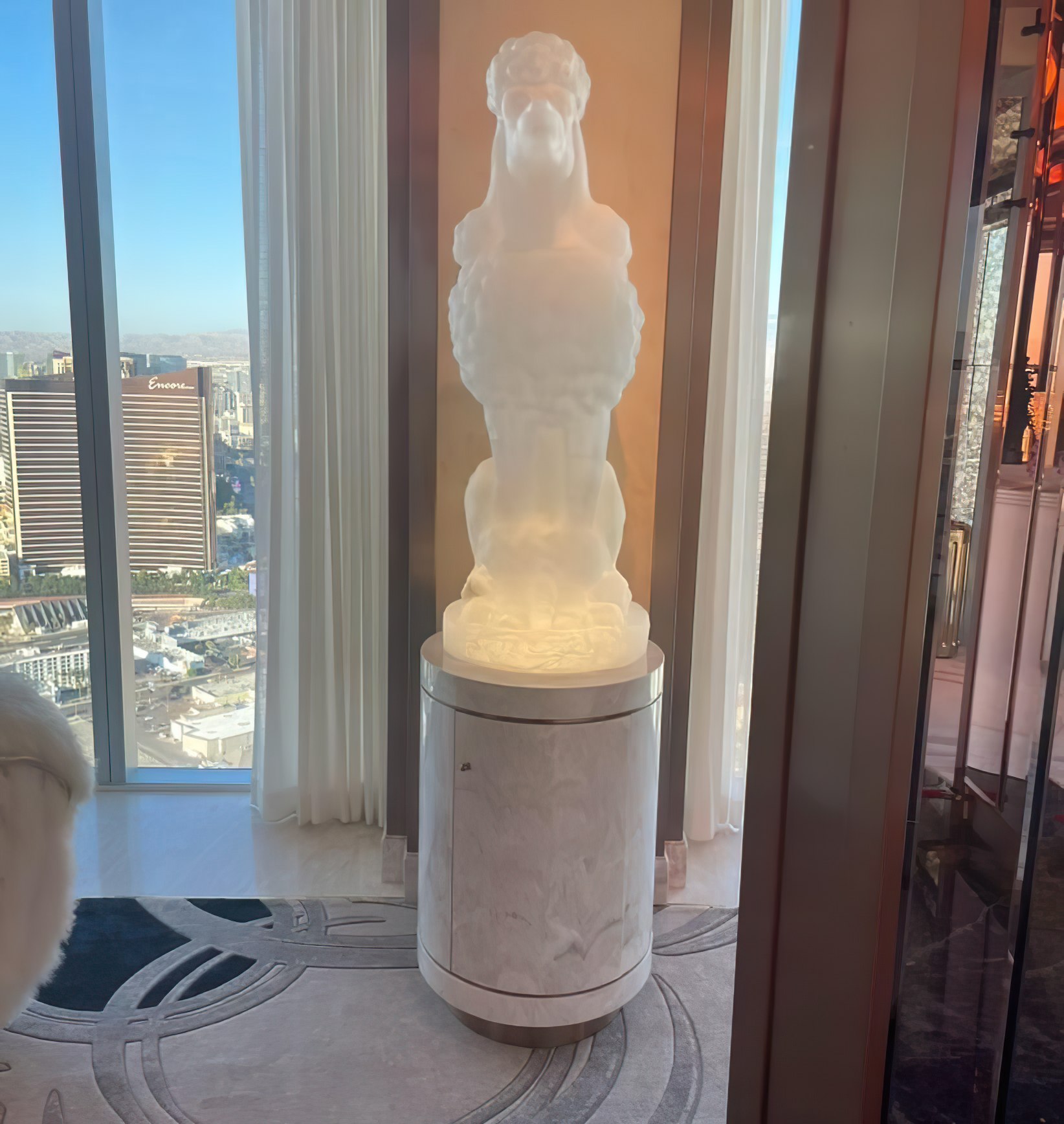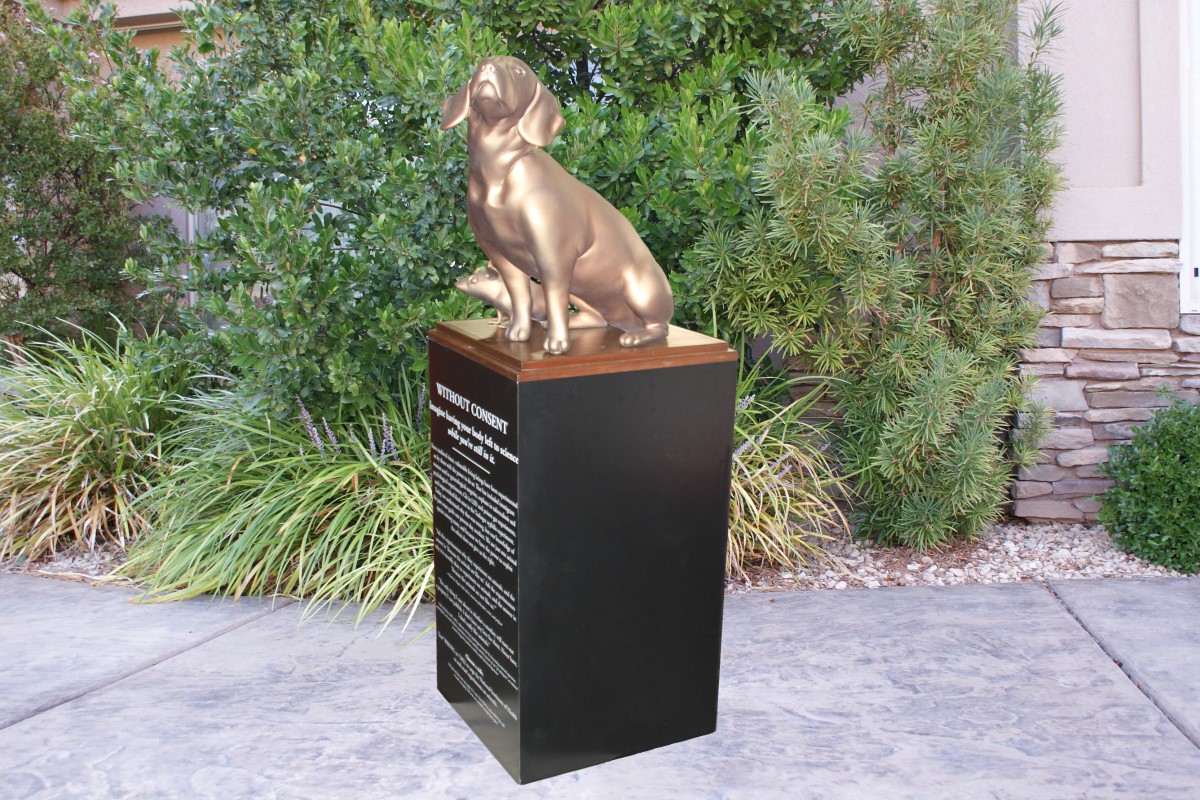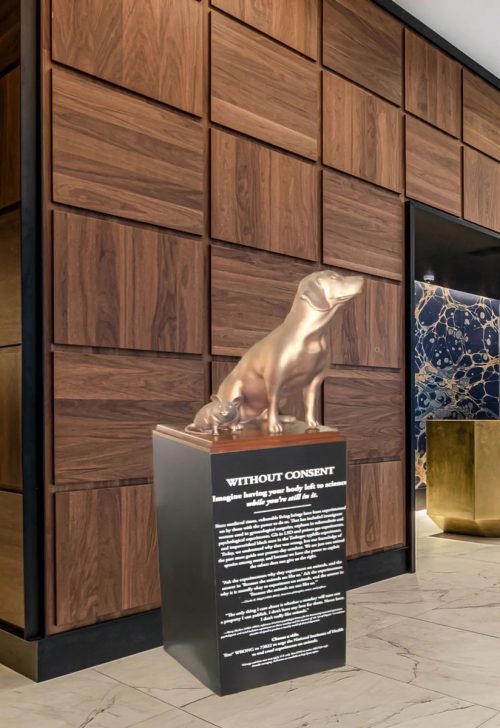Large Dog Statues
Large Dog Statues
We Build Custom 3D Statues
The Timeless Appeal of Larger Dog Statues: Art, Symbolism, and Craftsmanship
From the ancient tombs of Egyptian pharaohs to the sprawling estates of European nobility, dogs have been celebrated throughout history as loyal companions, protectors, and symbols of power. Today, dog statues—particularly larger-than-life dog statues—continue to capture our imaginations, serving as enduring symbols of loyalty, strength, and companionship. These monumental sculptures adorn public parks, urban squares, museums, and private gardens, drawing attention with their lifelike presence or whimsical interpretations of beloved breeds.
Larger dog statues offer more than just a striking visual statement. They blend art and symbolism, representing the bond between humans and their canine companions while elevating the space they occupy. Whether realistic or abstract, made of bronze, stone, or modern materials, these statues are created with meticulous craftsmanship and often serve as poignant tributes, guardians, or playful additions to public and private spaces. In this in-depth exploration of larger dog statues, we’ll uncover their historical significance, artistic value, and the various creative approaches used in crafting these timeless works of art.

The Historical and Cultural Significance of Dog Statues
The relationship between humans and dogs is one of the oldest in history, with dogs earning their place as loyal companions and protectors over thousands of years. It’s no surprise that, for centuries, civilizations have chosen to honor this relationship by immortalizing dogs in statue form. In ancient cultures, dog statues often had symbolic meanings that went beyond companionship. They were protectors, guardians, and sometimes even spiritual guides.
In ancient Egypt, dogs were closely associated with Anubis, the jackal-headed god of mummification and the afterlife. Statues and carvings of dogs were common in tombs and temples, where they were believed to offer protection to both the living and the dead. Similarly, in ancient China, dog statues were frequently used as guardians. The Foo Dog, a lion-dog hybrid, was placed at the entrances of temples, palaces, and homes to ward off evil spirits. These statues, often large and intricately detailed, symbolized protection and power.
Fast-forward to Europe in the 18th and 19th centuries, where dog statues became popular features in gardens, estates, and public spaces. These statues were often depictions of hunting dogs—spaniels, hounds, and setters—symbolizing nobility, wealth, and the country lifestyle. Large dog statues were often used to convey the owner’s status and taste, as well as their connection to the land and the natural world.
Today, larger dog statues continue to hold cultural significance. They are often used as memorials for heroic or significant dogs, such as police or military service animals, or simply as loving tributes to a beloved pet. These statues celebrate the loyalty, courage, and companionship that dogs provide and have become cherished elements of public and private spaces around the world.
Craftsmanship and Materials: Bringing Larger Dog Statues to Life
The creation of larger dog statues requires not only artistic vision but also technical expertise. Whether the statue is a realistic depiction of a specific breed or an abstract interpretation of a dog’s form, the process of bringing a statue to life is a complex combination of artistry and craftsmanship.
One of the most traditional materials used for larger dog statues is bronze. Bronze has been favored for centuries for its durability, ability to capture fine details, and the beautiful patina it develops over time. The process of creating a bronze dog statue often begins with a small clay or wax model. This model is used to create a mold, into which molten bronze is poured. Once the bronze has cooled and hardened, the statue is finished with patinas, polishing, and additional detailing to give it a lifelike or artistic appearance.
Another popular material for larger dog statues is stone. Stone statues can be carved from marble, granite, limestone, or other types of rock. Stone statues tend to have a more classical appearance and are often used in gardens or public parks, where they can withstand the elements. Stone sculptures are typically carved by hand, with artists carefully chiseling away at the material to create the desired form. The natural textures and patterns in the stone can add an extra layer of visual interest, making stone dog statues both rugged and elegant.
In recent years, modern materials such as resin, fiberglass, and even recycled materials have been used to create larger dog statues. These materials offer flexibility in terms of design, weight, and cost, allowing artists to experiment with more abstract forms or larger-than-life sizes. For example, fiberglass allows for lightweight but durable statues that can be painted in bright colors or given a metallic finish to mimic bronze or stone.
The choice of material often depends on the intended setting and purpose of the statue. For public installations or memorials, durability is key, so materials like bronze and stone are favored. For more playful or contemporary designs, lighter materials like resin or fiberglass allow for more creative freedom. Regardless of the material used, the craftsmanship involved in creating a large dog statue is a dive to the artist’s skill and attention to detail.

Iconic Large Dog Statues Around the World
Throughout history and in contemporary times, larger dog statues have become beloved landmarks, drawing attention for their artistic value, cultural significance, or sheer scale. Here are a few notable examples of iconic large dog statues around the world:
- Hachiko Statue in Tokyo, Japan: One of the most famous dog statues in the world is the statue of Hachiko, a loyal Akita who waited every day at Shibuya Station for his owner, even after the owner passed away. Hachiko’s loyalty became legendary, and in 1934, a bronze statue of Hachiko was erected outside the station in his honor. The statue has since become a symbol of loyalty and devotion, and it remains a popular meeting spot and tourist attraction in Tokyo.
- The Greyfriars Bobby Statue in Edinburgh, Scotland: Another iconic dog statue is that of Greyfriars Bobby, a Skye Terrier who, according to legend, guarded the grave of his owner for 14 years until his own death. In 1873, a life-size statue of Bobby was placed at the entrance to Greyfriars Kirkyard in Edinburgh, Scotland. The statue, cast in bronze, has become one of the city’s most beloved landmarks, symbolizing loyalty and devotion.
- Newfoundland Dog Statue in St. John’s, Newfoundland, Canada: In St. John’s, Newfoundland, a large bronze statue of a Newfoundland dog stands as a tribute to the breed’s long history of working alongside fishermen in the region. Newfoundland dogs are known for their strength, loyalty, and swimming abilities, and this statue celebrates the important role the breed played in the maritime culture of Newfoundland. The statue, which features a Newfoundland dog in a majestic pose, stands as a reminder of the bond between humans and their working dogs.
- Puppy by Jeff Koons: For a more contemporary take on dog statues, Jeff Koons’ Puppy is one of the most playful and imaginative examples. Standing 43 feet tall, this massive sculpture of a West Highland White Terrier is covered in thousands of live flowers. The statue, which was originally installed at the Guggenheim Museum in Bilbao, Spain, is a whimsical and larger-than-life celebration of art and nature. While it’s not a traditional dog statue, its sheer size and joyful presence make it one of the most memorable examples of canine art.
- Military Working Dog Teams National Monument, San Antonio, Texas: Unveiled in 2013, the Military Working Dog Teams National Monument honors the service and sacrifices of military working dogs and their handlers throughout U.S. history. The monument features several life-size bronze statues of military working dogs from various branches of the armed forces, including a German Shepherd, a Labrador Retriever, a Doberman Pinscher, and a Belgian Malinois. Located at Lackland Air Force Base in San Antonio, the monument is a tribute to the courage and loyalty of these dogs and their vital role in military operations.
The Appeal of Larger Dog Statues for Public and Private Spaces
One of the reasons larger dog statues are so popular is their versatility. They can be used in a wide variety of settings, from public parks and plazas to private gardens and estates. The presence of a dog statue—especially one rendered in a grand, life-size, or larger-than-life scale—adds character and a sense of warmth to any environment.
In public spaces, dog statues often serve as landmarks or meeting points. Their accessible, often relatable subject matter makes them popular with people of all ages. Children, in particular, are drawn to statues of dogs, finding joy in interacting with the statues by climbing on them or posing for photos. For urban designers and landscape architects, dog statues can provide a sense of playfulness, inviting interaction while also serving as meaningful artistic statements.
In private gardens, larger dog statues can be used to enhance the aesthetic of outdoor spaces, providing focal points that draw the eye and add personality. Whether the statue depicts a breed that holds personal significance or simply adds an element of fun, dog statues have a universal appeal. For dog lovers, in particular, these statues can serve as tributes to beloved pets, offering a way to immortalize their companionship.
Larger dog statues are also frequently commissioned as memorials. Whether commemorating a real dog or symbolizing loyalty and devotion, these statues evoke strong emotional connections. Memorials for military or police dogs, like the Military Working Dog Teams National Monument, celebrate the bravery and dedication of working dogs, while statues like Hachiko’s or Greyfriars Bobby’s honor the unbreakable bond between humans and their pets.

Modern Innovations in Dog Statues: Materials and Techniques
While traditional materials like bronze and stone remain popular for larger dog statues, modern innovations have expanded the possibilities for artists. New materials, such as fiberglass, resin, and stainless steel, allow for greater flexibility in design, size, and finish. These materials are often lighter, more cost-effective, and easier to transport, making them ideal for large installations.
Resin and fiberglass, for example, can be molded into complex forms and finished with metallic coatings to resemble bronze or other materials. These lightweight materials are also resistant to weather and can be used for both indoor and outdoor installations. Additionally, advancements in 3D printing technology have allowed artists to create highly detailed, custom dog statues with precision and accuracy.
Stainless steel, known for its durability and modern aesthetic, has also become a popular material for contemporary dog sculptures. Steel statues, often polished to a reflective finish, give a sleek, modern look that contrasts with more traditional materials like stone or bronze.
These new techniques and materials offer exciting possibilities for the future of dog statues, allowing artists to push the boundaries of traditional sculpture while still celebrating the timeless bond between humans and dogs.
Conclusion: The Enduring Appeal of Larger Dog Statues
Larger dog statues have captivated artists, collectors, and dog lovers for centuries. Whether crafted from bronze, stone, or modern materials, these statues celebrate the loyalty, strength, and companionship that dogs bring to our lives. From ancient Egypt to modern art installations, dogs have been immortalized in sculpture as guardians, companions, and symbols of devotion.
As public art installations, garden features, or memorials, larger dog statues provide a unique combination of artistic expression and emotional connection. They stand as lasting tributes to the special bond between humans and dogs, continuing to inspire, delight, and engage audiences around the world.
Checkout WhiteClouds’ 3D Statues to learn more information.
Contact us today to learn more about our 3D services and how we can help you achieve your goals.
